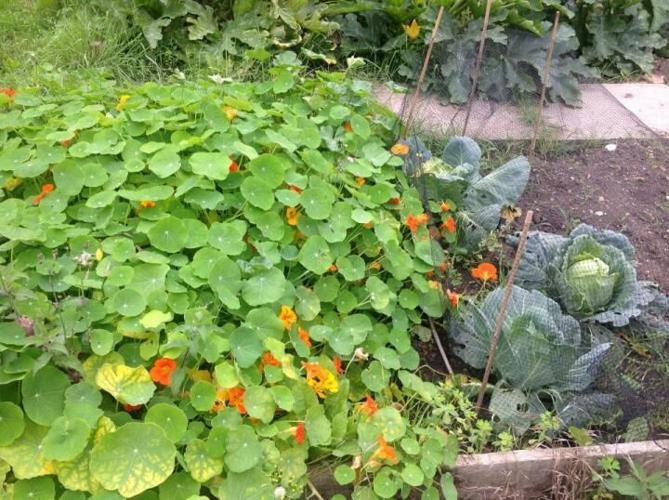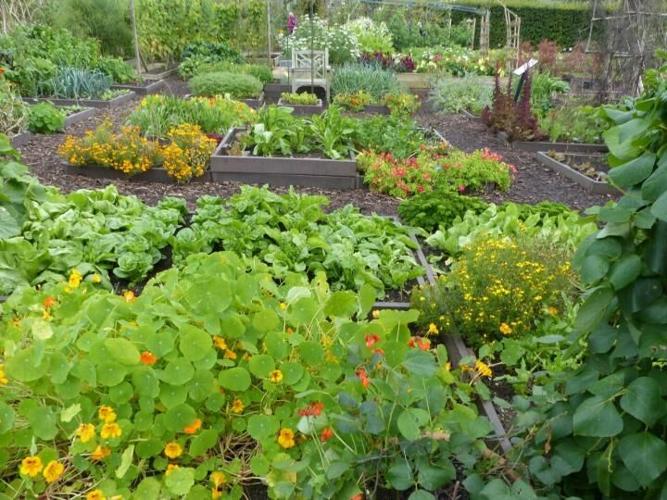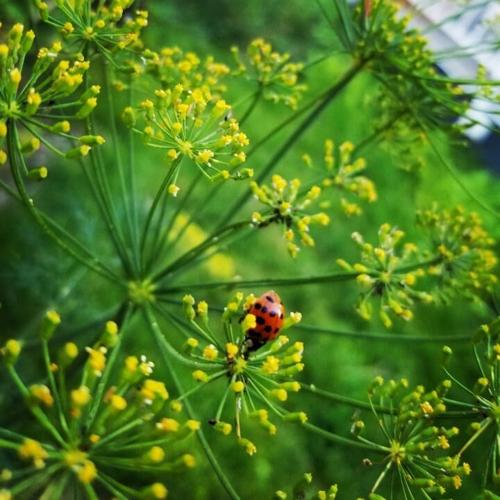
It all started with a dinner party.
The table was set with linen napkins, polished silver, and fresh-cut dahlias from my own garden. As the sun dipped behind the trees, casting golden light across the patio, one of my guests leaned in and asked, “How do you keep your garden so healthy without a single pest in sight?”
I smiled, poured another glass of rosé, and said, “It’s all about the company your plants keep.”
That’s when I introduced my friends to the world of companion planting a centuries-old gardening technique that’s as elegant in theory as it is effortless in practice. And if you’ve ever wished your garden could be just a little more self-sustaining, this story is for you.
When Plants Become Perfect Partners
Companion planting is the art of pairing plants that support one another. Think of it as social networking for your garden only with more dirt and far better results.
Some plants help their neighbors by drawing in pollinators. Others fend off common pests or even improve the flavor and health of the plants next to them. And then there are the overachievers those that fix nitrogen in the soil or offer cooling shade during summer’s peak heat.
Once I discovered this secret, my garden transformed from a lovely yet high-maintenance hobby into a low-effort, high-reward sanctuary. No chemicals. No complicated schedules. Just natural harmony.
The Garden Makeover That Changed Everything

The transformation started with tomatoes. I’d been battling hornworms for two summers straight, and not even the chicest copper plant tags could distract from the damage.
Then I read an old tip: basil and parsley are tomato’s best companions. Not only do they ward off thrips and moths, but basil also boosts flavor, and parsley attracts helpful bugs that protect the tomatoes.
I planted a row of tomato seedlings and tucked basil and parsley in between like hidden bodyguards. Within weeks, the garden was buzzing literally with bees and beneficial insects. The plants thrived, the hornworms disappeared, and my next Caprese salad was a thing of beauty.
Unlikely Duos That Became Garden Superstars
Flush with confidence, I decided to reimagine the rest of my raised beds with a new mindset plants that serve both function and flair.
Potatoes, which can be finicky, were next. I planted garlic between the rows along with butter lettuce and cabbage. The garlic gave off a bold scent that kept away aphids and beetles, while the lettuce added softness and the cabbage a structural elegance. It looked like a landscape design feature and performed like a fortress.
Then came the cruciferous patch. Cabbage, kale and broccoli are favorites in my kitchen, but not so much in the garden where caterpillars had once declared war. Enter nasturtiums bright, trailing blooms that work as natural decoys. They lured the pests away and added a whimsical pop of orange and red to the cool green tones of the brassicas.
How a Herb Became My Garden’s Silent Hero
Sage might be the most underrated plant in my garden.
I first added it on a whim, thinking it would lend some culinary convenience. But then I noticed it doing far more than seasoning roast chicken. When planted around carrots and cabbage, sage confuses the insects that prey on them. No carrot flies. Fewer cabbage moths. Just one more example of nature quietly doing the heavy lifting.
Plus, the silvery-green foliage of sage offers a beautiful contrast against darker greens, making your beds look designed rather than just planted.
The Day I Fell in Love with Sunflowers Again

I admit I used to think sunflowers were too “country” for my aesthetic. I imagined them in wide-open fields or children’s storybooks not in my refined backyard retreat. But then I learned they can be a game-changer for climbing crops.
When I paired sunflowers with cucumbers and pole beans, it created a vertical garden that was both practical and picturesque. The sunflowers acted like living trellises, the beans curled up their stalks and the cucumbers hung like little green chandeliers. As a bonus, the sunflowers shaded delicate greens that would have otherwise wilted in the midday sun.
Suddenly, sunflowers were chic.
The Plant That Does It All Year After Year
Tansy may not be a household name but it should be in every serious gardener’s vocabulary.
This low-maintenance perennial is like the doorman of a luxury high-rise always on guard. Once established, tansy draws in pest-eating heroes like ladybugs and predatory wasps while repelling destructive pests like cutworms. It also adds a golden burst of color to any border and only needs to be planted once.
For gardeners who want more beauty with less effort, tansy is your ticket.
Where to Start If You Are New to Companion Planting
If your garden feels more like a project than a pleasure, companion planting can change everything.
You don’t need to overhaul your entire space. Start small. Pair basil with tomatoes. Add nasturtiums near cabbage. Slip a few sage plants in next to your carrots. Then watch as your garden begins to balance itself.
For the most up-to-date list of which plants help each other thrive, I highly recommend the companion planting chart by The Old Farmer’s Almanac. It is meticulously researched, beginner-friendly and steeped in generations of wisdom. You can find it at Almanac.com/Companion-Planting.
A Garden Designed by Nature and Curated by You
There’s a certain elegance in letting nature take the lead while you enjoy the rewards. With companion planting, your garden becomes a living conversation between plants a curated space that is as smart as it is beautiful.
And the best part? You get to play the role of conductor in this symphony of growth, flavor and fragrance. All while sipping something chilled under the shade of your sunflowers, admiring a garden that thanks to its perfect pairings practically takes care of itself.




(0) comments
We welcome your comments
Log In
Post a comment as Guest
Keep it Clean. Please avoid obscene, vulgar, lewd, racist or sexually-oriented language.
PLEASE TURN OFF YOUR CAPS LOCK.
Don't Threaten. Threats of harming another person will not be tolerated.
Be Truthful. Don't knowingly lie about anyone or anything.
Be Nice. No racism, sexism or any sort of -ism that is degrading to another person.
Be Proactive. Use the 'Report' link on each comment to let us know of abusive posts.
Share with Us. We'd love to hear eyewitness accounts, the history behind an article.